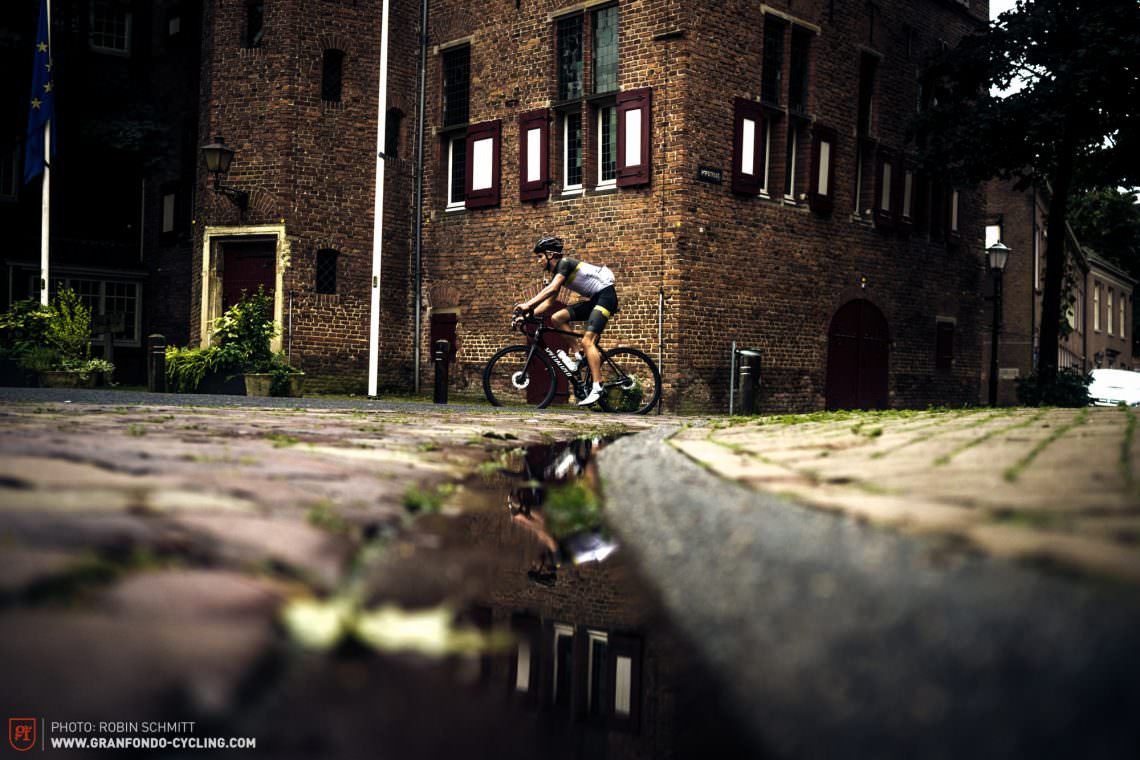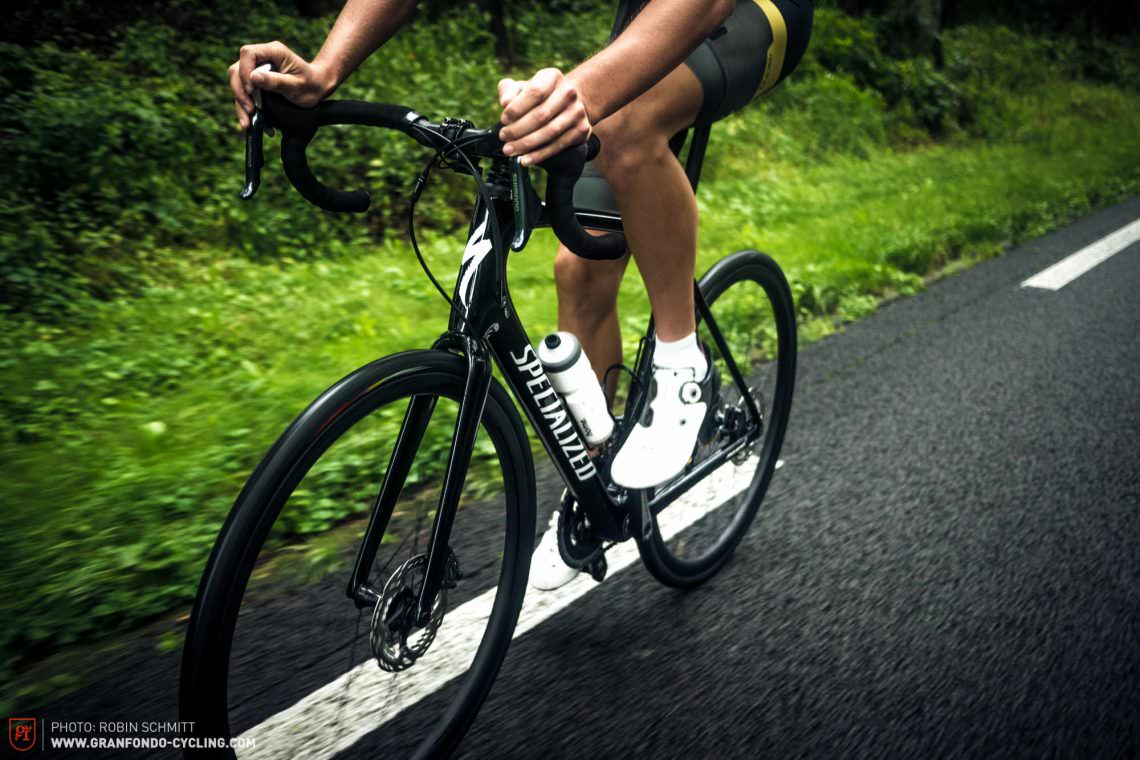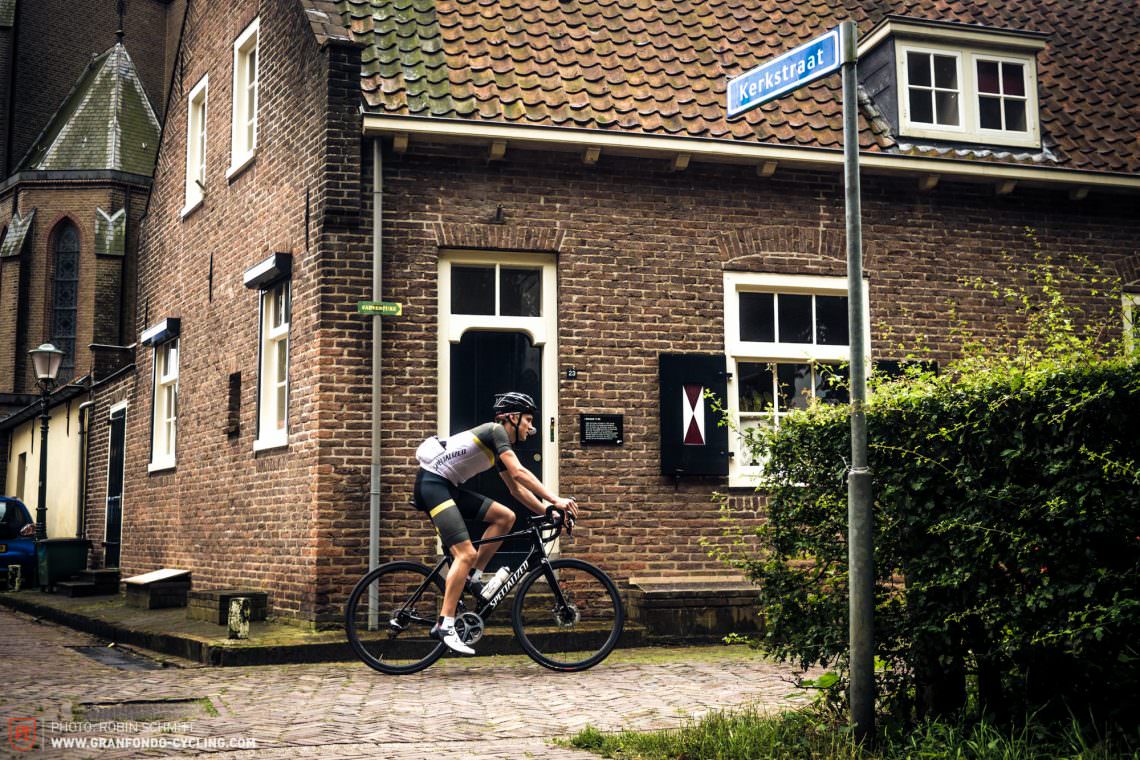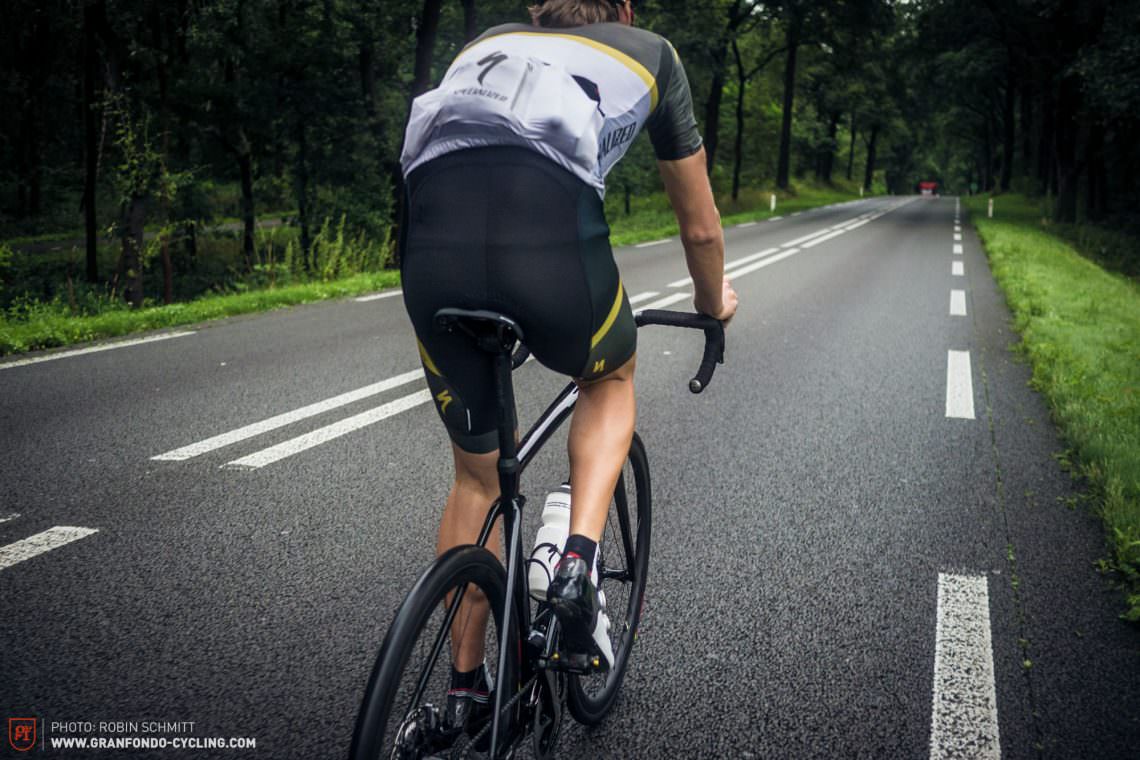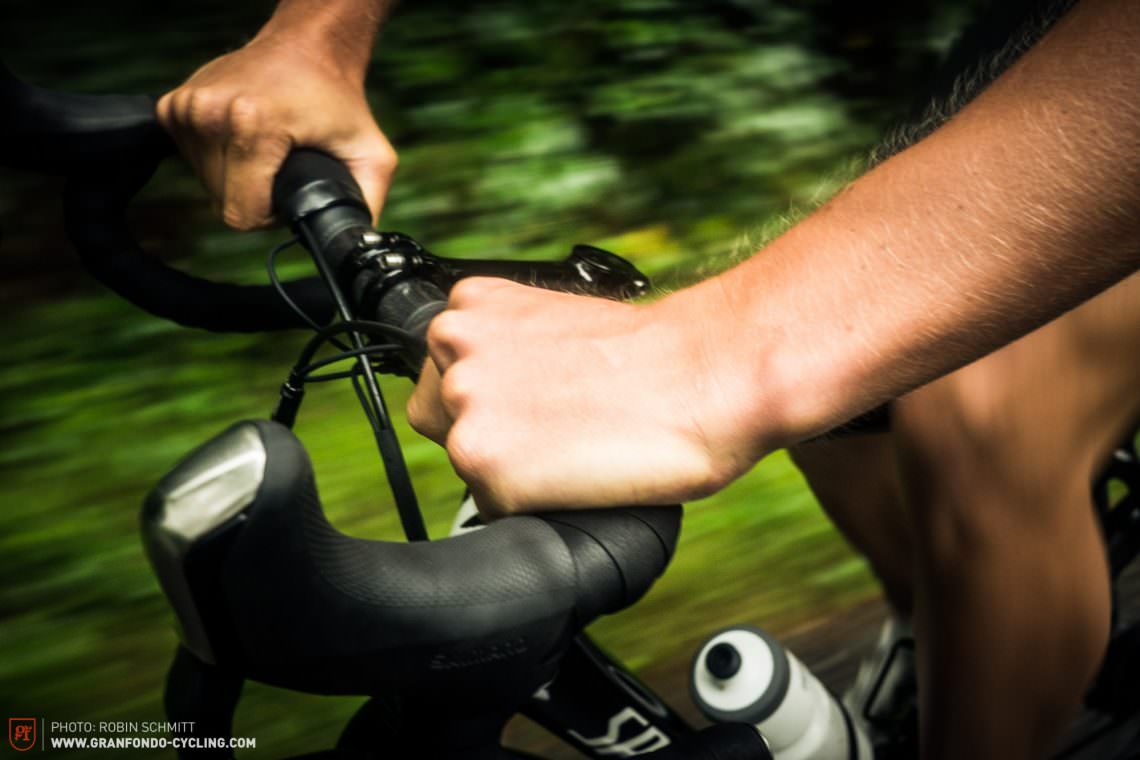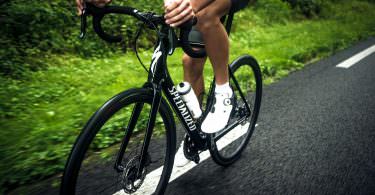With the launch of the Roubaix range back in 2002, Specialized took the forefront in creating a new category of bikes that was defined by comfort and less aggressive, more forgiving ‘endurance’ geometry. The Roubaix quickly became the go-to bike for many, bringing its own brand of pro-level cycling to the masses. But the competition didn’t hang around (as our recent Group Test revealed) and Specialized have now once again set the benchmark with their latest Roubaix generation. Citing ‘Smoother is faster’, their approach employs some major changes: going for disc brakes and sacrificing the former frame’s elastomer Zertz inserts at the front and opting for front-end cartridge suspension, plus above the BB shell they’ve added their SWAT kit (but more on that later).
In case you were wondering, we’ve tackled the 7 most important questions about the Specialized Roubaix 2017.
Where else but the Low Countries to test ride the Specialized Roubaix? Here’s what we learned:
What’s the difference between a suspension fork and the Roubaix’s shock-absorbing front-end?
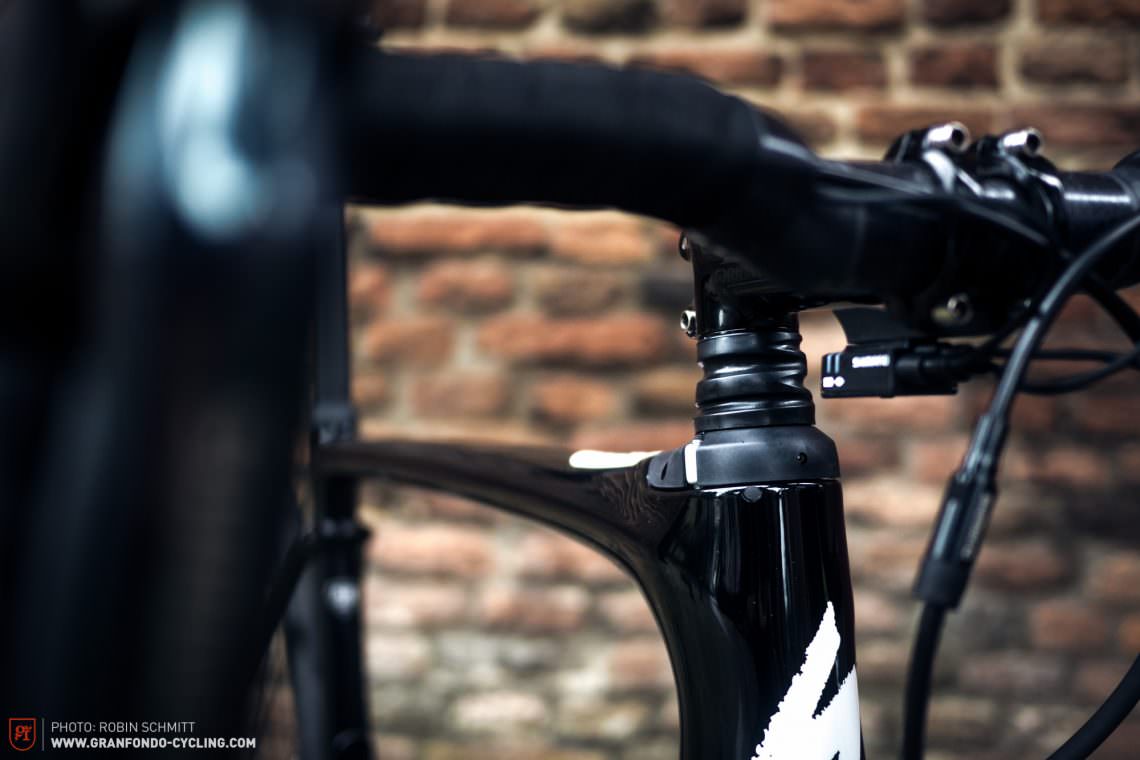
Unlike a regular suspension fork (like on the Cannondale Slate), the Roubaix’s head angle remains unchanged. The rear end is still stiff and the front FutureShock unit only moves above the head tube, with 17 mm of downward travel and 3 mm upwards.

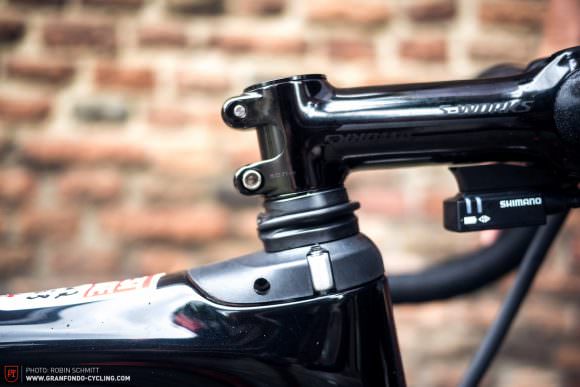
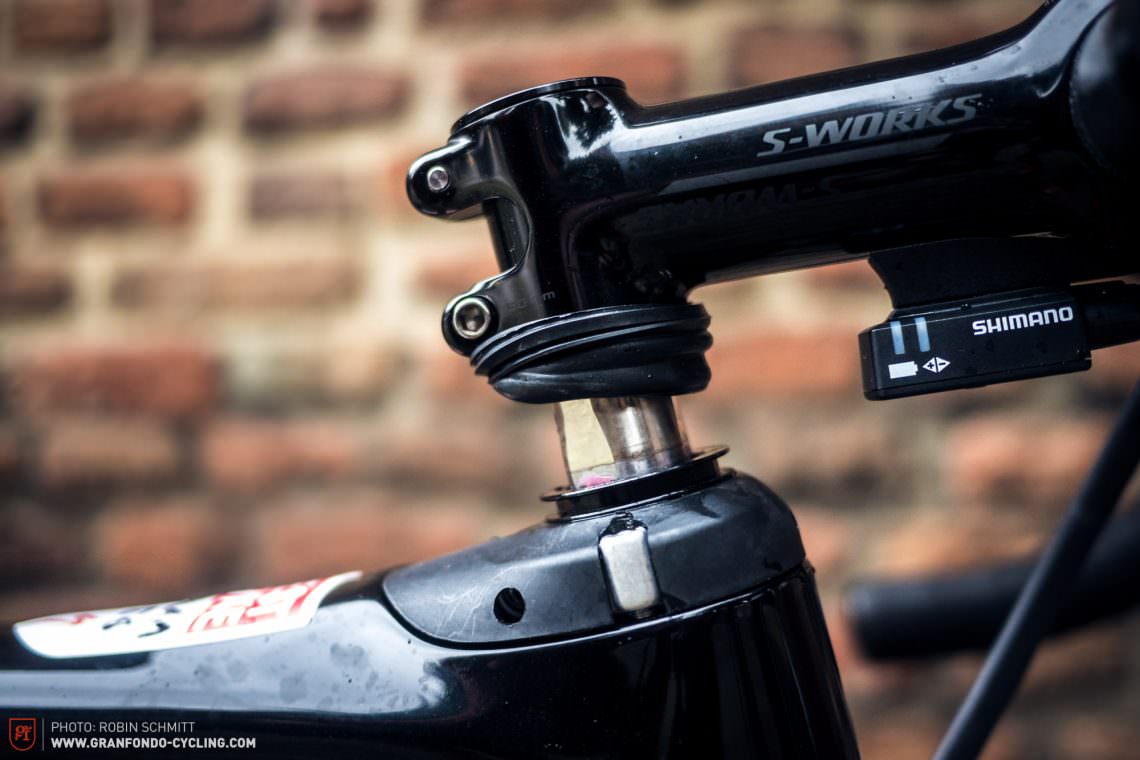
Does the new suspension affect how the Roubaix 2017 rides?
Yes. There’s an undeniable sensation that the front is moving, particularly when cornering and when you’re having to shift your weight. The test riders were all split over this sensation, and it’ll certainly take some getting used to. The bike will be sold with three different springs so riders can have their pick, between softer or firmer. (With the firmer spring more suited to hard, smooth tarmac).
Why have Specialized got rid of the Zertz inserts in the Roubaix’s frame?
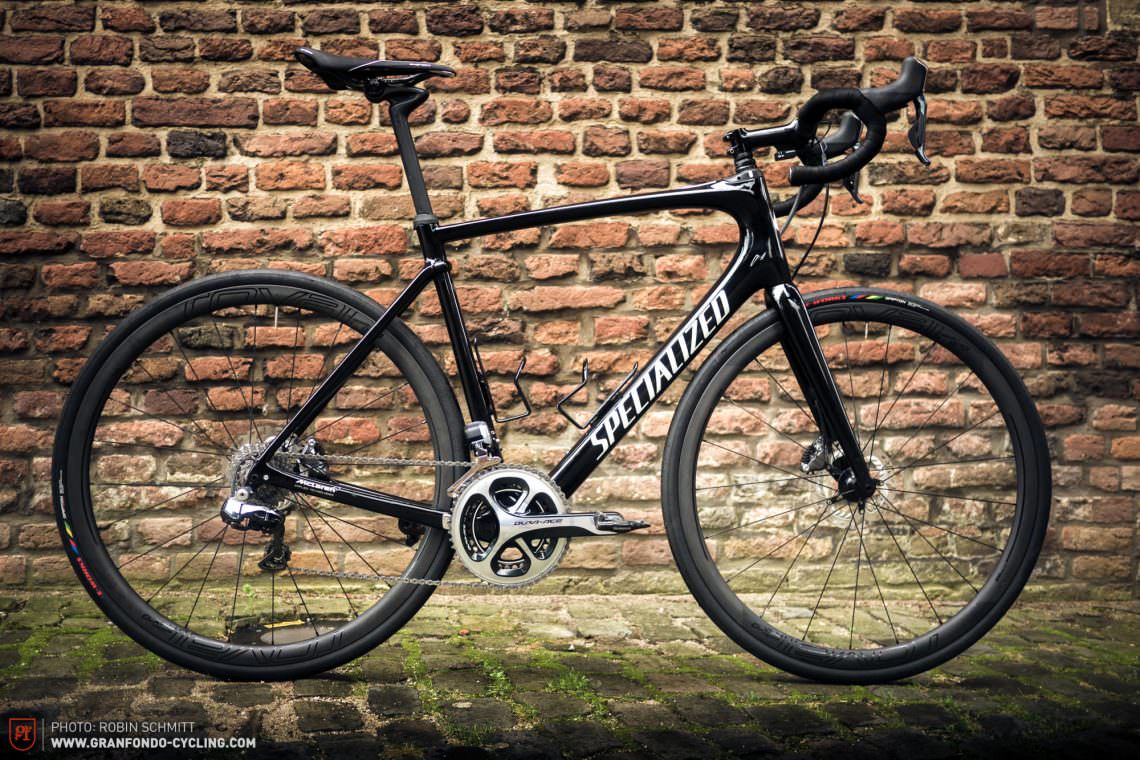
Comfort, or compliance, can be achieved in all manner of ways, be it thanks to a certain type of carbon lay-up, frame construction, or techno gimmicks on various components. As our test review of the former Roubaix mentioned, we weren’t blown away by the Zertz inserts – neither in terms of technology nor comfort, and other bikes had succeeded in gaining an equal amount of compliance (or more) with simpler and more aesthetically pleasing methods. Now that the new Roubaix generation has done away with these inserts and gone for the FutureShock concept, a longer seatpost and lower twin-bolt seat clamp, they claim to have achieved sufficient compliance.
Is the new Roubaix more comfortable?
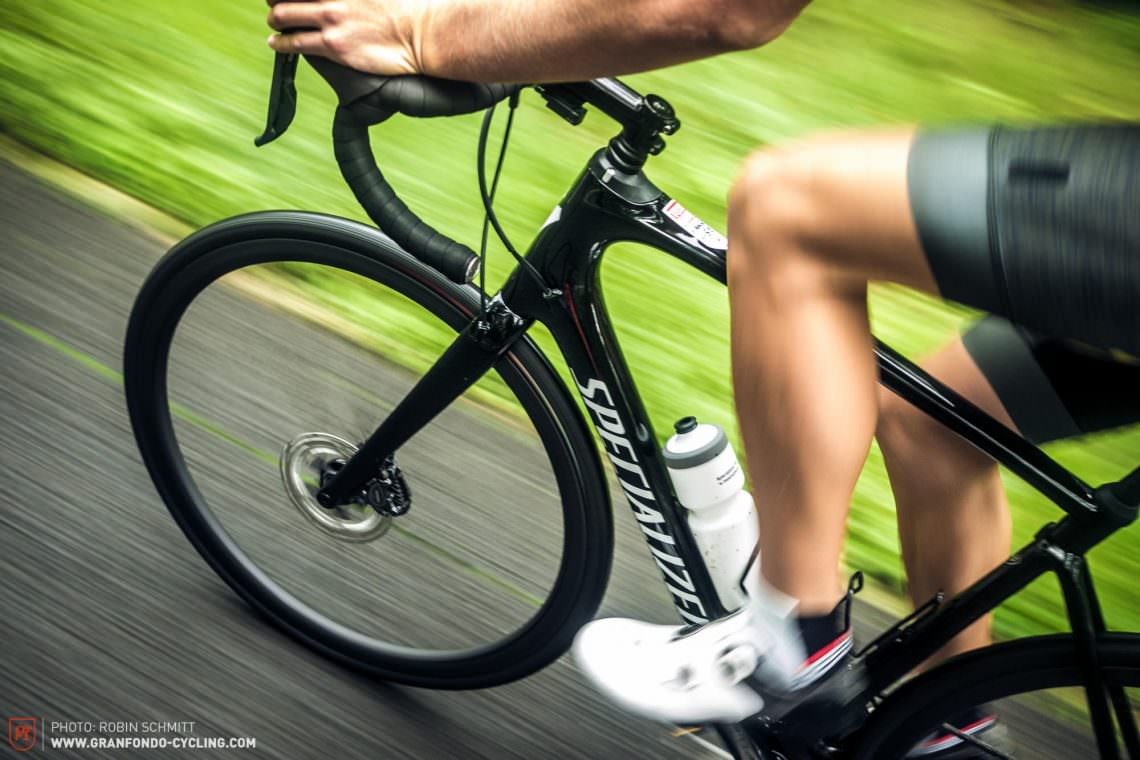
Yes. significantly. It irons the road, potholes and all, virtually flat, soaking up road chatter and vibrations. The rear end is noticeably stiffer and less forgiving, but that’s good – that’s where the power transfer is happening, and there’s nothing we hate more than an overly compliant, wallowy rear end on tarmac.
To get the desired compliance at the rear, Specialized went for their tried-and-tested CG-R seatpost, using a longer seatpost to achieve more flex (hence the rubber seal and thicker tube) and putting the seat clamp just below the top tube junction and lowering the seatstays.
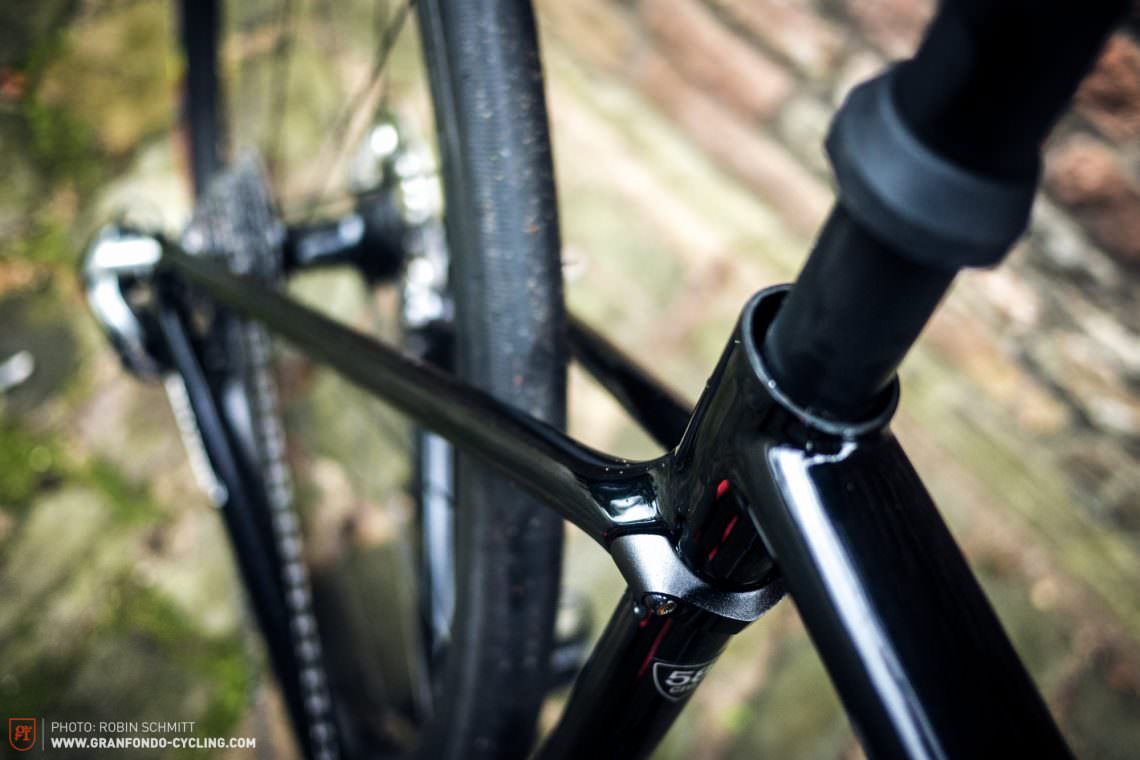
Design, aesthetics and system integration – what’s the deal with the Specialized Roubaix 2017?
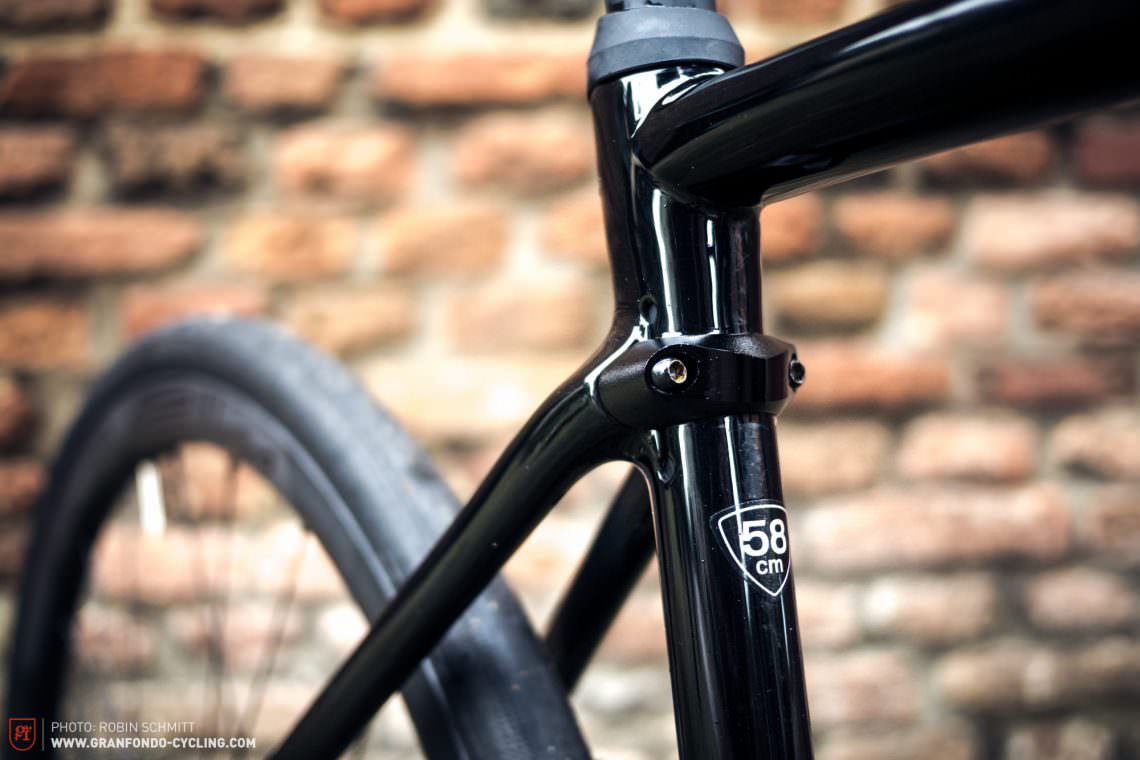
People never tire of talking about the Roubaix’s design, and this latest generation is causing even more of a stir as the Californians went for a much cleaner frame profile (largely due to the absence of the Zertz). The Di2 integration and seat clamp are both mega functional, but we reckon they could dedicate some more TLC to their finish (the aluminium seat clamp is slightly at odds with the sexy carbon frame). Our test bike was, however, just a pre-series model so it’s likely that the production bikes are going to sport a better finish.
The new Roubaix’s toptube is less sloping, giving the bike a more race-orientated image that we definitely rate.
Can you get standard caliper brakes for the new Roubaix?
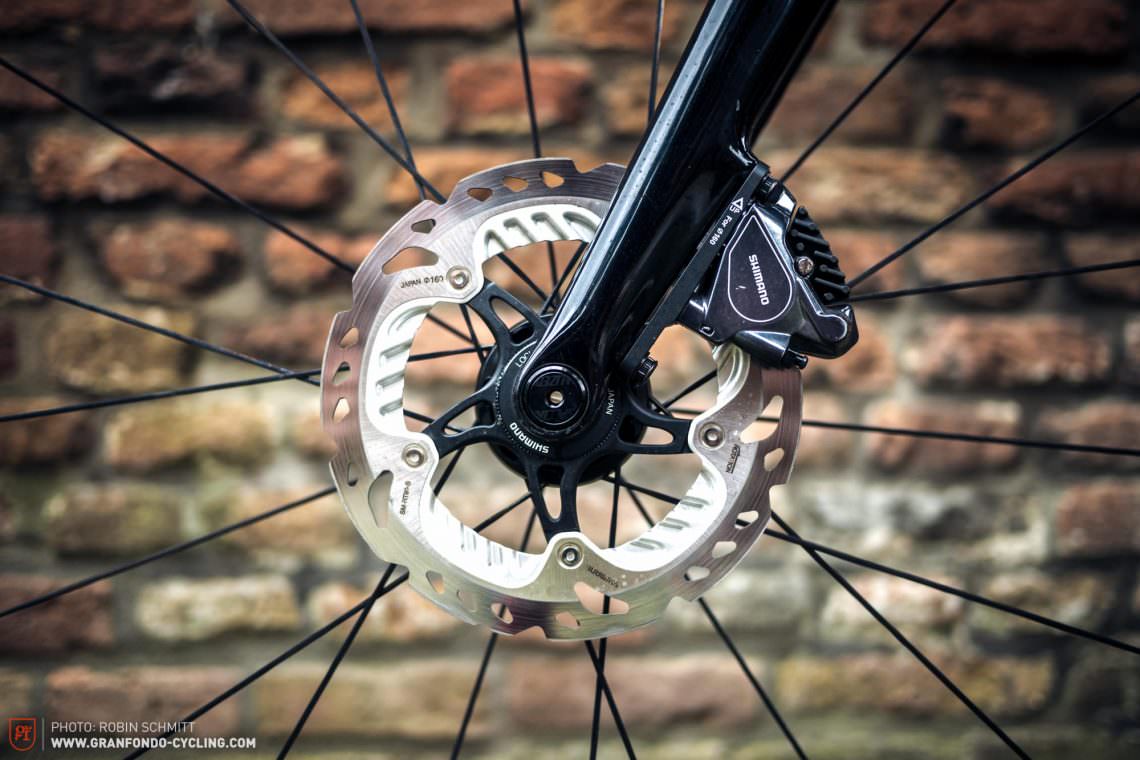
No. (well, not really). it only comes in a disc brake version, with flat-mount disc brake calipers. However, down in the lower price brackets, there’s both the entry-level Roubaix SL4 Rim (€ 1,799) and the Sport Rim (€ 1,999), which are essentially the same as the current 2016 models.
Specialized Roubaix – Weight, price, geometry and availability?
The new generation kicks off with the entry-level Specialized Roubaix Elite (€ 2,499). The top-of-the-range model – the S-Works Roubaix eTAP – asks for no less than € 9,799.
The new S-Works Roubaix frame weighs just 900 g, making it lighter than the current Tarmac frame (966g) and the ‘regular’ Roubaix at 1050 g. However, the FutureShock (295 g) and the compliant CG-R seatpost (260 g) means the Roubaix is highly unlike to win any weigh-ins – but is that a bad thing? Weight isn’t everything. The S-Works Roubaix model with the eTAP tips the scales at a respectable 7.2 kg in total.

The first models will be available from October 2016, but depending on size and model, you may have to wait.
Specialized took design cues for the new Roubaix from the Tarmac, borrowing its geometry and giving the Roubaix the same head angle as their super popular racing machine. Here’s a run-through of the geometry:
| Size | 49 | 52 | 54 | 56 | 58 | 61 |
|---|---|---|---|---|---|---|
| Seat tube | 425 mm | 462 mm | 481 mm | 501 mm | 522 mm | 563 mm |
| Top tube | 527 mm | 535 mm | 545 mm | 562 mm | 576 mm | 589 mm |
| Head tube | 90 mm | 110 mm | 125 mm | 150 mm | 185 mm | 205 mm |
| Fork rake | 50 mm | 50 mm | 44 mm | 44 mm | 44 mm | 44 mm |
| Trail | 58 mm | 57 mm | 61 mm | 55 mm | 55 mm | 52 mm |
| Front center | 580 mm | 586 mm | 584 mm | 590 mm | 605 mm | 612 mm |
| Head tube angle | 72,0 ° | 72,2 ° | 72,7 ° | 73,5 ° | 73,5 ° | 74,0 ° |
| Seat tube angle | 74,0 ° | 74,0 ° | 74,0 ° | 73,5 ° | 73,5 ° | 73,5 ° |
| Chainstay | 413 mm | 413 mm | 415 mm | 415 mm | 418 mm | 418 mm |
| Bottom bracket lowering | 77 mm | 77 mm | 76 mm | 76 mm | 74 mm | 74 mm |
| Wheelbase | 981 mm | 987 mm | 987 mm | 993 mm | 1011 mm | 1018 mm |
| Standover height | 715 mm | 743 mm | 762 mm | 785 mm | 813 mm | 844 mm |
| Reach | 374 mm | 376 mm | 380 mm | 385 mm | 390 mm | 396 mm |
| Stack | 534 mm | 554 mm | 570 mm | 597 mm | 629 mm | 650 mm |
Joker question (# 8): What exactly is the SWAT kit and its purpose?
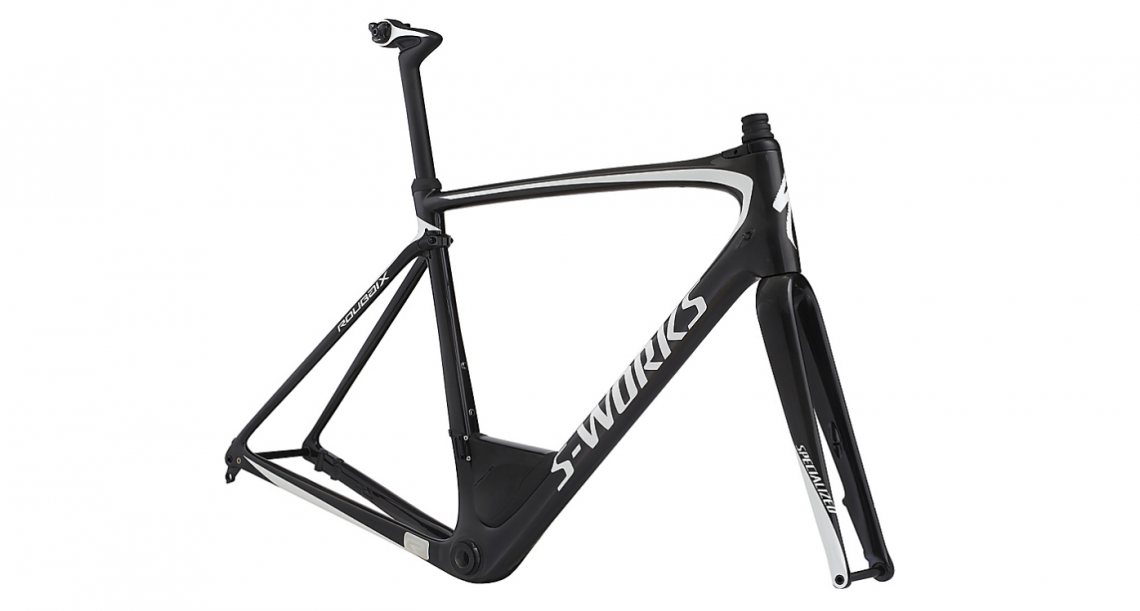
For anyone that isn’t aware, SWAT stands for Storage, Water, Air and Tools. As Specialized (and us) prefer to ride with empty pockets whenever possible, the Californians have integrated a small box into the frame that has space to store some essentials: windproof jacket, tools or money.

After years of development and hard work with the world’s best riders, Specialized appear to be successfully retaining their position as one of the big players within cycling. Instead of purely system integration, they’ve gone for striking technical features – although it’ll take much more exhaustive testing to really assess their long-term value. The Roubaix 2017 shares many of the same design cues as its predecessors, but features a much more performance-focused aesthetic and cutting-edge technology that’s primed for comfort at speed. Stay tuned for more.
For more information head to: specialized.com
Did you enjoy this article? If so, we would be stoked if you decide to support us with a monthly contribution. By becoming a supporter of GRAN FONDO, you will help secure a sustainable future for high-quality cycling journalism. Click here to learn more.
Words & Photos: Robin Schmitt


